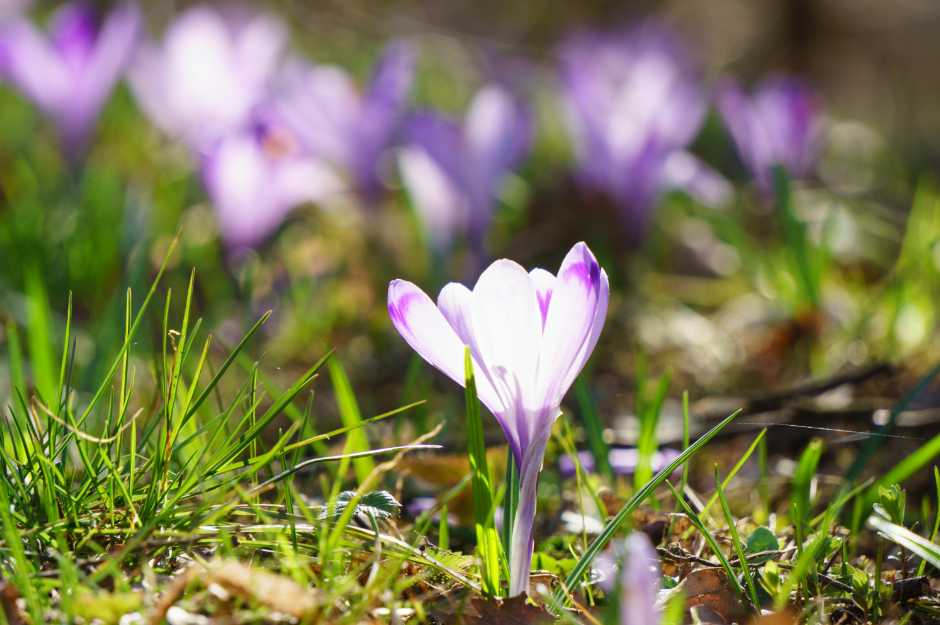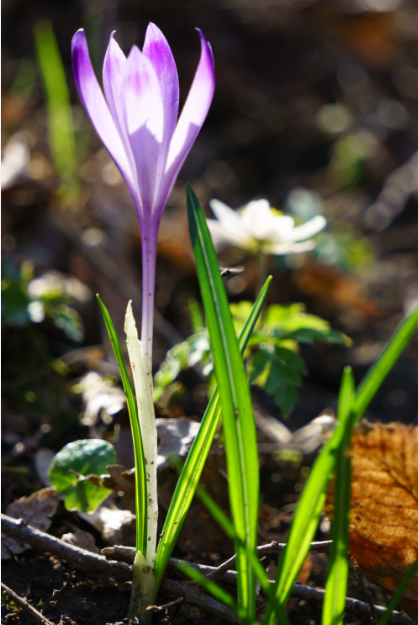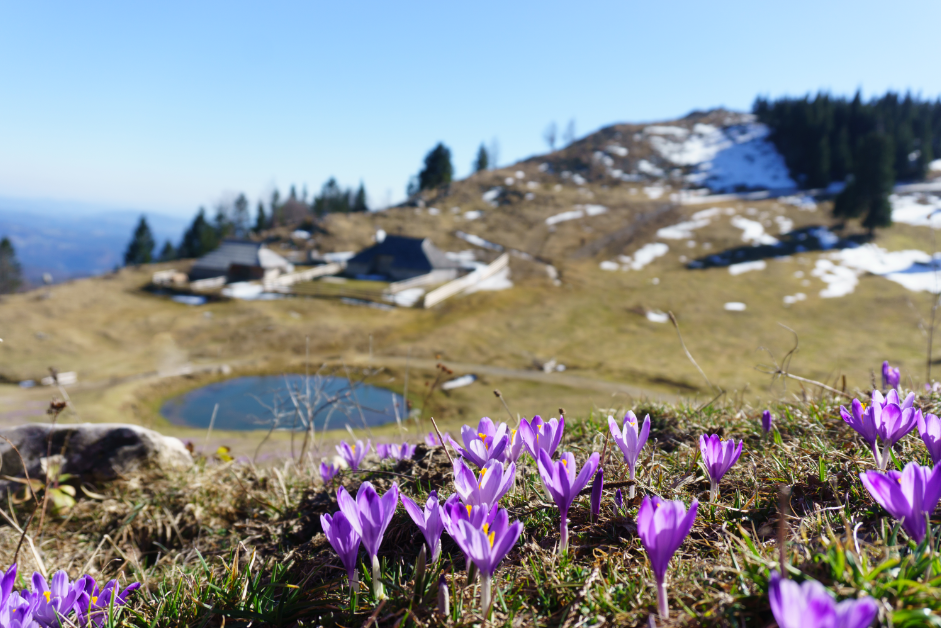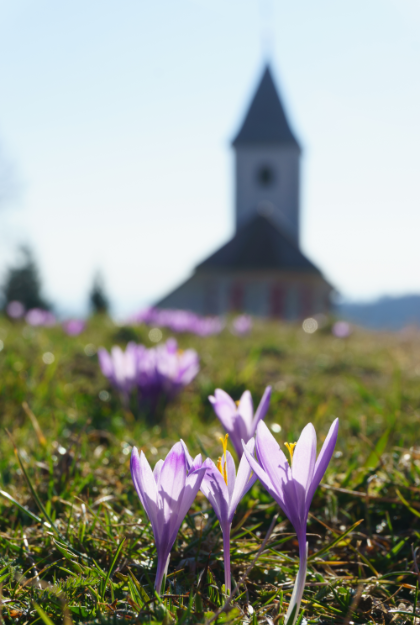It's springtime in Southern Europe and the meadows are becoming full of blooming, violet crocuses.
Crocus is a gen(i)us of Familly Iridaceae
Delicate flowers are perennals (living longer than 2 years), growing from corms, organs similar to bulbs, but not the same.

In Slovenia, the most prominent species is C. vernus.
For those who love gastronomy, the first association to crocus is - saffron.
The original saffron is made from Spanish saffron (Crocus sativus L.).
However, it's often mixed with 'false saffron" (Carthamus tinctorius L.), or even synthetic safranal.
The method of choice to determine if saffron is original or not is Gas Chromatography / Mass spectroscopy. Surprisingly, UV/Vis Spectroscopy is used for routine testing, and as a chemist, I can say that it's not very reliable:
> These standards specify microscopic and chemical requirements, and the classification of saffron into different categories is done according to the values obtained for the optical density of aqueous extracts of the spice. The spectrophotometric scan that is obtained from the aqueous extracts is characteristic; it is analogous to a "fingerprint" of the extract. In it three maxima of 440 nm, 257 nm, and 330 nm can be seen, which according to the ISO standards (10) are attributable to the crocins (coloring principle), picrocrocin (bitterness), and safranal (aroma), respectively.
If you want to find out more about the analysis, follow the link to the original paper.

In order to find out what molecules are responsible for this magic colour, we need to use HPLC. I'll quote the original research article:
> Nine anthocyanins were detected. The Crocus species and cultivars were placed into seven chemotypes according to their contents of 3,7-di-O-, 3,5-di-O-glucosides or 3-O-rutinosides of delphinidin and petunidin and to the presence of 3,7-di-O-malonyl-glucosides of petunidin and malvidin and delphinidin 3-O-glucoside-5-O-malonylglucoside. These malonated anthocyanins have only been found in Crocus and may be characteristic for this genus.
As you can see, this colour is unique.

In order to find out the composition of "smell" or as scientists prefer to say "volatile compounds", we need to use something even more complicated: TD-GC-MS. TD = thermal desorption, GC = gas chromatography, MS = mass spectroscopy.
> The data indicate that compounds in C. vernus corms were mostly aliphatic acids (95.12%). These compounds comprised about 30% abundance in C. sativus corms, whereas lactones comprised about 60%. Additionally, C. sativus corms contained higher abundances of aliphatic aldehydes (8.93%) and terpenoids (2.80%). In C. vernus flowers, the major compounds present were aliphatic hydrocarbons (76.35%) and aliphatic acids (8.38%). Aromatic compounds were present as follows: C. vernus corms (0.50%), C. sativus corms (60.50%), and C. vernus flowers (Tr). These data indicate that considerable differences existed in the VO of C. vernus and C. sativus corms.
If you want to read more about volatile compounds of crocus, click the link.
